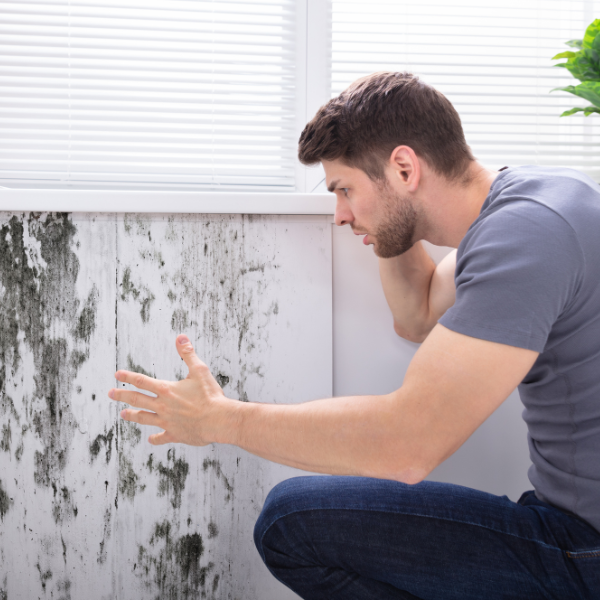


Symptoms of Mold Exposure
There are many symptoms of mold exposure. Current evidence indicates that allergies are the type of diseases most often associated with molds. An allergic reaction is the most common symptom that could include wheezing and difficulty breathing.
Inhalation of fungal spores, fragments (parts), or metabolites (mycotoxins and volatile organic compounds) from a wide variety of fungi may lead to or exacerbate immunologic (allergic) reactions, cause toxic effects, or cause infections.
A single or repeated exposure to mold, mold spores, or mold fragments may cause non-sensitive individuals to become sensitive to mold, and repeated exposure has the potential to increase sensitivity. Allergic responses include “hay fever”-like symptoms, such as headache, sneezing, runny nose, irritated eyes, and skin rash (dermatitis). Molds can cause asthma attacks in people with asthma who are allergic to mold. Fungi in buildings may cause or exacerbate symptoms of allergies, especially in persons who have a history of allergic diseases (such as asthma and rhinitis). In addition, molds can irritate the eyes, skin, nose, throat, and lungs of individuals, whether or not they are allergic to mold. Other symptoms include nasal and sinus congestion, burning, watery and red eyes, a sore throat, a dry cough, and skin irritation.
These and other symptoms may be associated with exposure to mold. But all of these symptoms may be caused by other exposures or conditions unrelated to mold growth. Therefore, it is important not to assume that mold is the cause of such symptoms.
The effects of mold exposure can be acute or chronic. An acute effect is an immediate, severe reaction to a large exposure. A chronic effect may take days, months or years to manifest, and usually comes from small, repeated exposures.
If a person experiences these symptoms only when occupying a particular building, then that person may possibly be experiencing symptoms of mold exposure.
There are four important indoor allergenic molds. They are Penicillium, Aspergillus, Cladosporium and Alternaria. Alternaria and Cladosporium are outdoor molds that can be found indoors if the doors or windows of a building are left open and the spores are carried by air currents.
For more detailed information on mold and its health effects, consult a healthcare professional or the state or local health department.
Certified mold inspectors should not offer medical advice to clients. People with health problems that may be related to mold should seek a physician trained in occupational, environmental or allergy medicine. Recommend that clients may wish to consult with a healthcare provider regarding any health problems they might be experiencing.